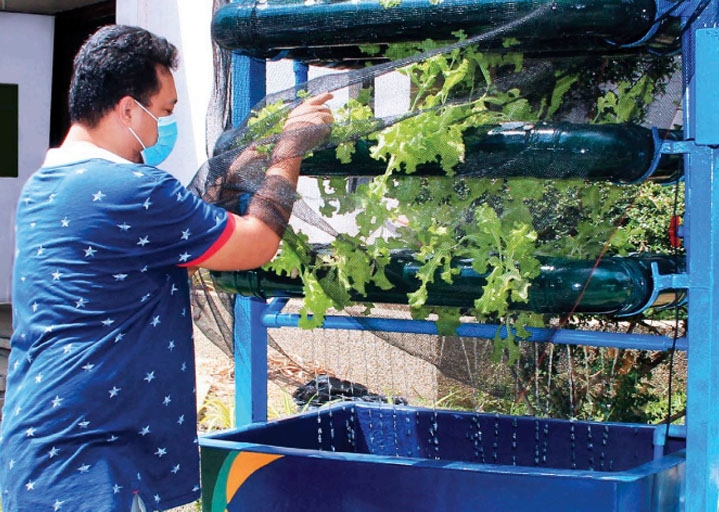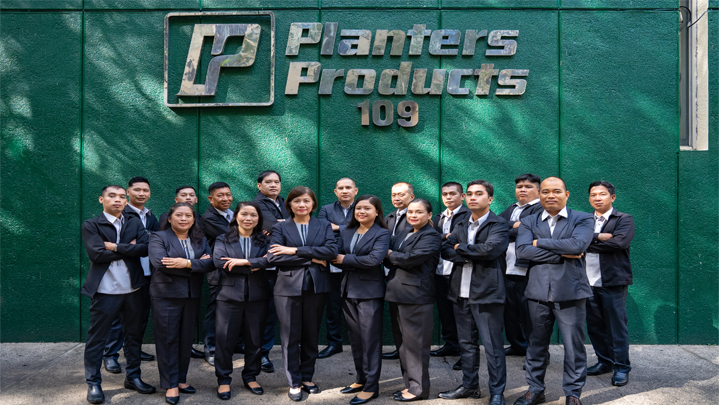News

Boosting Fish Production Amid the COVID-19 Pandemic through Urban Aquaponics
FISHERIES ARE AMONG THE STRATEGIC AREAS for intervention for the Department of Agriculture’s Plant, Plant, Plant Program. Done through theBureau of Fisheries and Aquatic Resources’ Food Resiliency and Recovery Program, it aims to boost the productivity of fisheries nationwide despite the COVID-19 pandemic. Its goal is to enhance aquaculture production and ensure sustainability in capturing fisheries and inland waters. This is part of the government’s effort to ensure the nation’s food security and continuously provide Filipinos with safe and affordable fish and other fishery products.
The program entails various production-related interventions. These include the production and procurement of fry for distribution to fisherfolk, the promotion of intensive aquaculture through rehabilitation of aging aquaculture areas, and the modernization of aquaculture through farm mechanization. The program also supports expanded broodstock development towards self-reliance of Philippine aquaculture. It takes into account existing private, satellite, and legislated hatcheries to ensure sustainable development. Stocking of inland waters such as dams, rivers, and lakes is also intensified.
Partnerships with the local government units made it possible to provide immediate livelihood assistance for fisherfolk. As of June 2020 and throughout the enhanced and general community quarantines, the DA-BFAR has distributed 75 million fingerlings to 8,850 fish farmers and fishpond and cage operators, 229,092 kilograms of seaweed propagules to 1,412 seaweed farmers, 241 seaweed farm implements, 202 production-related technology demonstration projects to 295 fisherfolk association members, and 2,014 fishing gear and paraphernalia to 1,284 municipal fisherfolk.
Meanwhile, meeting the goal of sustaining sufficient food production as the nation eases into the “new normal” remains a priority, especially in urban communities. Given this, the Urban Aquaponics project was formally unveiled by Agriculture Secretary William Dar during the launching of DA’s Plant, Plant, Plant Program. This project was part of the agency’s celebration of the Farmers’ and Fisherfolk’s Month on May 26, 2020 at the DA Compound in Quezon City.
Urban Aquaponics: A “New Normal” of Food Production
More people are now turning to urban agriculture and aquaculture. This follows the government’s campaign and efforts to empower Filipinos to take control of their food security at the household and community level amid various inter-community restrictions due to the pandemic.
In support of this campaign, the DA-BFAR introduces urban aquaponics as part of the new normal of food production. It is an innovative and cost-efficient technology that integrates aquaculture (growing fish) and hydroponics (growing vegetables without using soil) in one production system.
Setting Up an Urban Aquaponics Unit Aquaponics units vary from simple set-ups that can produce food for household use to more complex ones producing loads of fi sh and vegetables for commercial scale production. However, all aquaponics systems regardless of size work in the same way with one purpose: to grow food.

In line with its Urban Aquaponics project, the DA-BFAR has developed at least five models of aquaponics that can fi t in small spaces in homes and backyards in urban communities. These models are open for replication by individuals and communities interested in starting their own aquaponics units.
A DA-BFAR aquaponics set-up has three essential parts: a pipe hydroponic system with fi lter and pre-cut holes that hold the plants, a lower tank made from fiberglass or canvass containing the fish, and a water pump powered by both solar energy and electricity. Fresh harvest depends on how excellent an aquaponics set-up works.
The set-up makes use of mutualistic operation between the fish and plants. Specifically, it allows water to flow from the fi sh tank into a biofilter system where waste is broken down into organic nutrients for the growing vegetables. The vegetables absorb these nutrients, cleaning the water before being re-circulated into the fish tanks.
Benefits of Urban Aquaponics
Aquaponics is widely-known for its multiple benefits. One prominent benefit is how it allows users to secure their food and maintain their own supply of clean, fresh, and good quality fish and vegetables. With aquaponics, an individual can harvest vegetables like lettuce and pechay after one month, while fish like catfish and tilapia are produced after four months of culture.
The technology is sustainable and eco-friendly. It uses less water than normally needed for fish farming and plant production since it is recycled in a closed loop. Moreover, it does not require any chemical fertilizers or pesticides to grow vegetables.
DA-BFAR’s models are solar and electricity hybrid-powered, so they consume less electricity to operate. The units also require minimal maintenance.
While its initial intended purpose was to serve as an immediate food source in cities and reduce dependence on the market for supply, urban aquaponics also offers its stakeholders a livelihood opportunity.
To illustrate, the small fiberglass models only take up a square meter of space and can already yield 50 to 75 pieces of catfish and 54 pieces of lettuce amounting to at least Php 4,080 per cropping.
One of the larger models can produce 120 to 300 pieces of catfish and 344 pieces of lettuce for a total of Php 112,572 in gross sales if sold. The cost of production for these models is only Php 36,000 and Php 120,000, respectively. Depending on the model used, one can expect to receive a full return on investment after one to four years.
Even without the pandemic, urban aquaponics is a valuable technology to normalize today. It allows its users to grow their own food anytime, anywhere, no matter the weather conditions.
For more information on Urban Aquaponics, the BFAR Inland Fisheries and Aquaculture Division may be reached at telephone numbers 8929-3439 or email ifadco@bfar.da.gov.ph
Source: Greenfields Magazine Issue 292
Contact Information
- Contact Numbers:
- +63(2) 8818 2332
- +63(2) 8816 4388
- Address:
- Planters Products Bldg. 109 Esteban Street, Legaspi Village Makati City
Philippines 1229

Employee's Corner :
e-Pay • e-Pay (PKSC) • C.O.F. Monitoring

